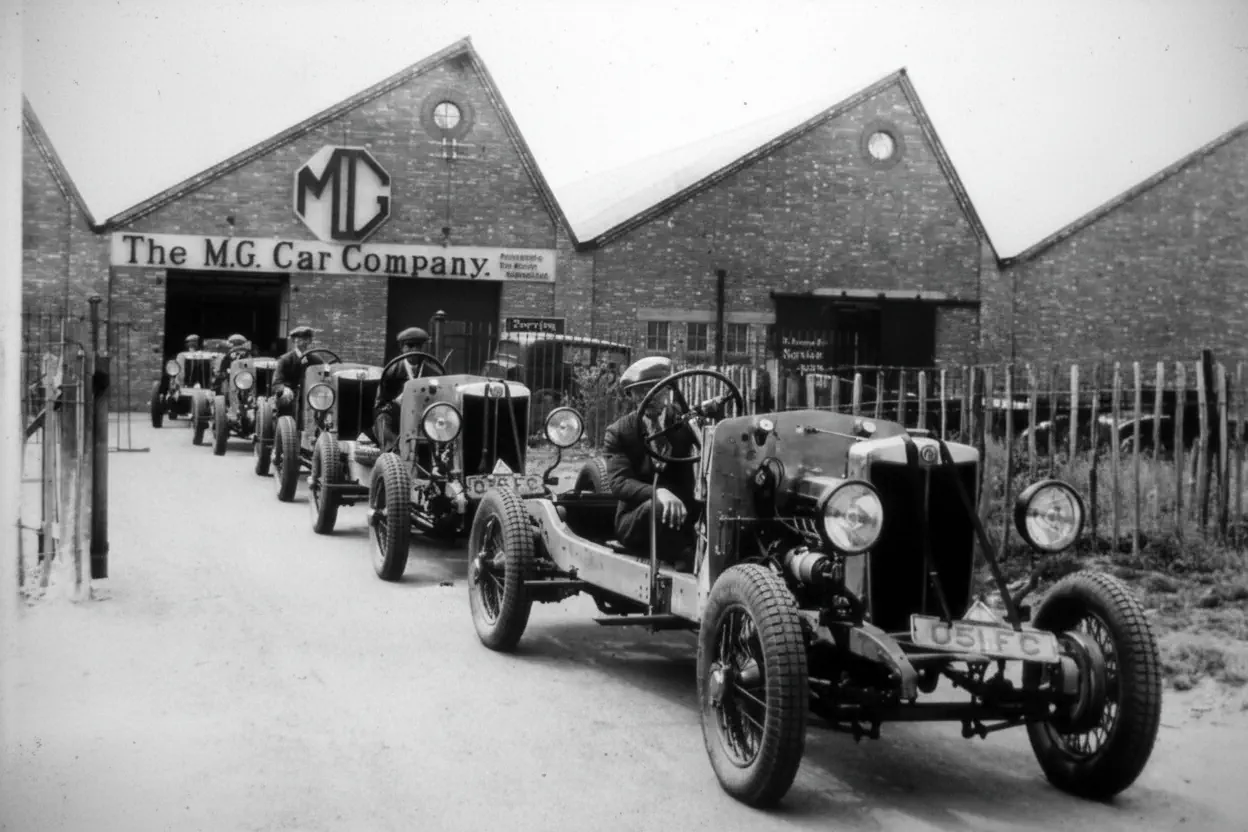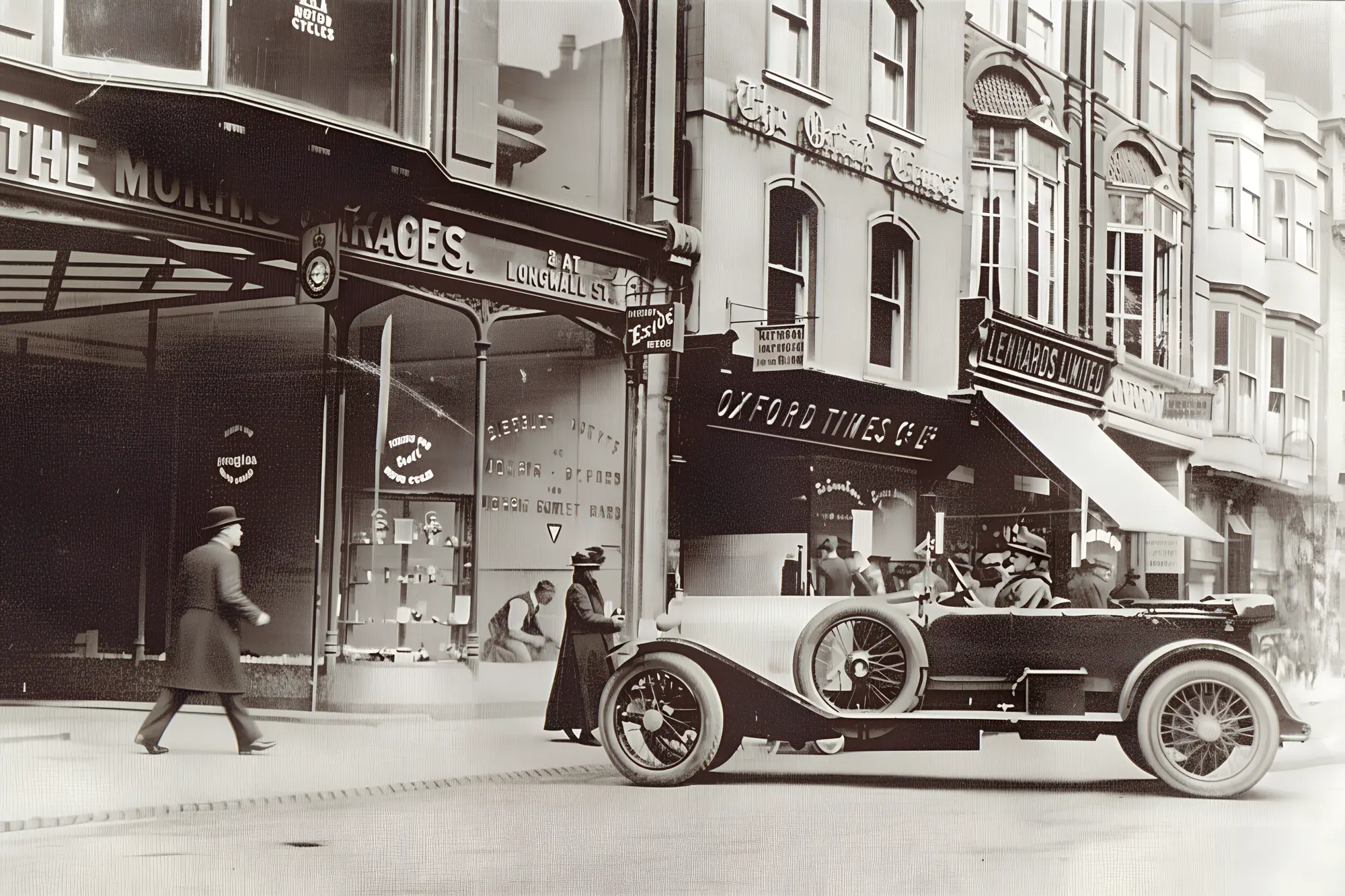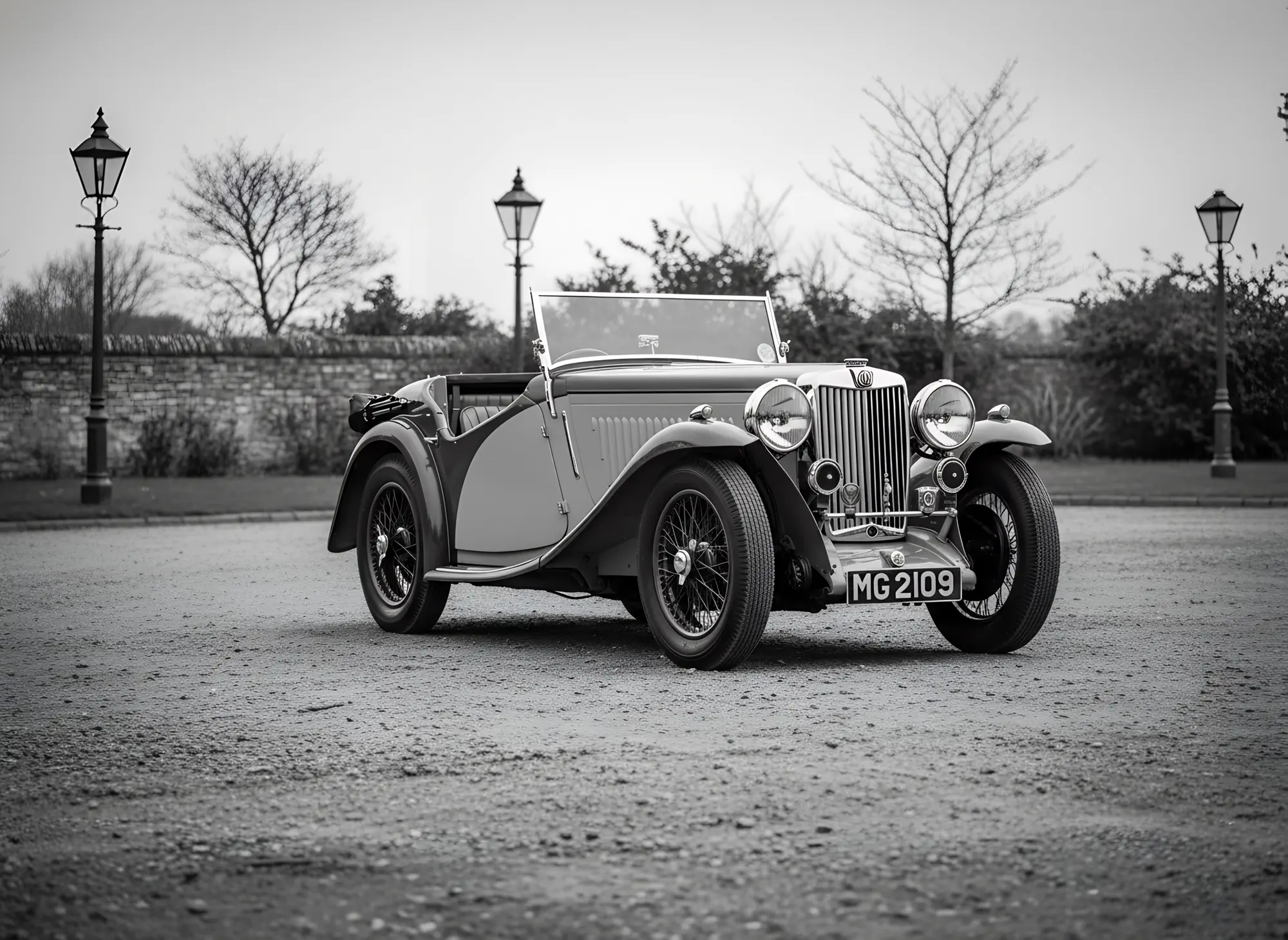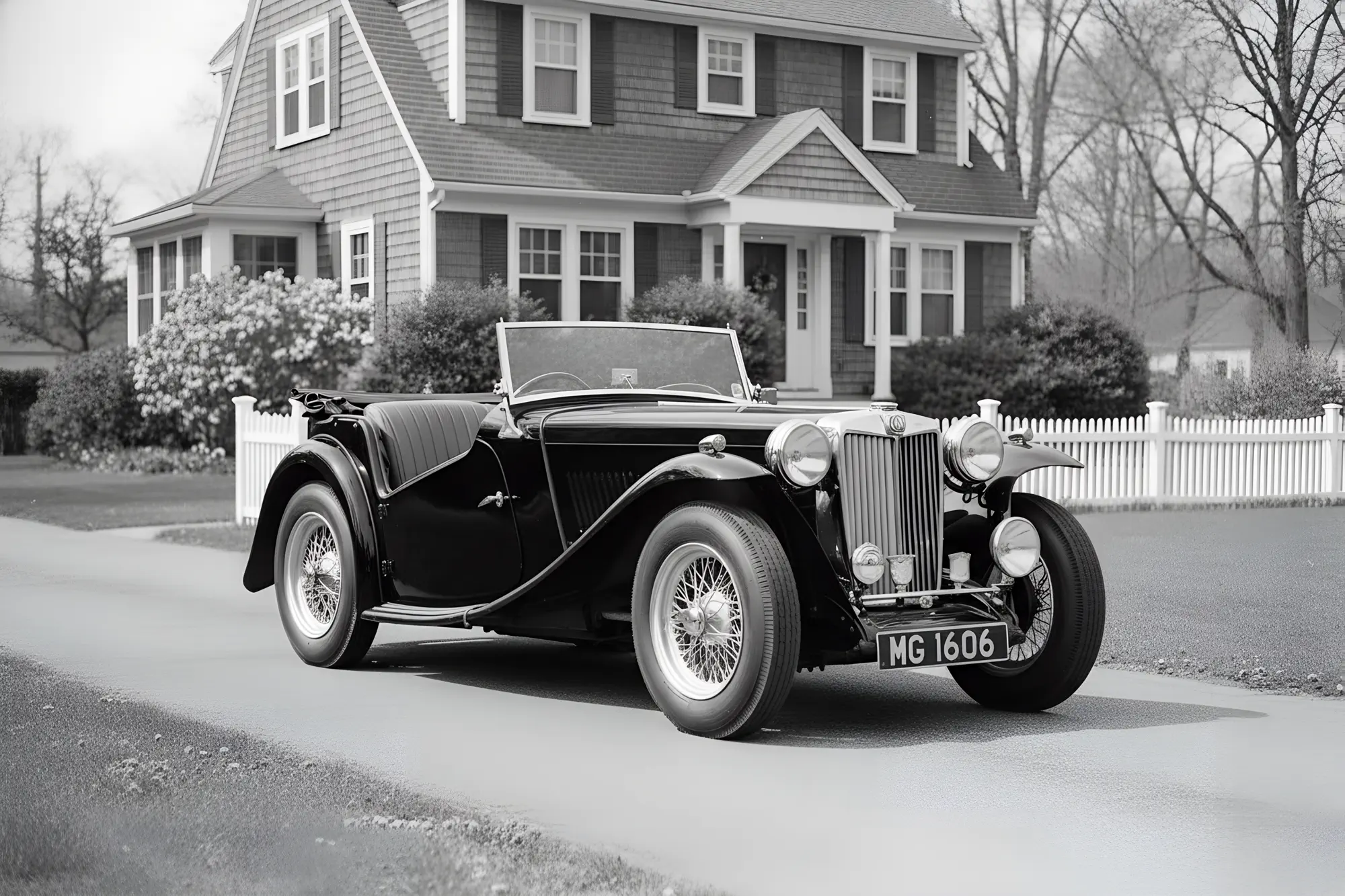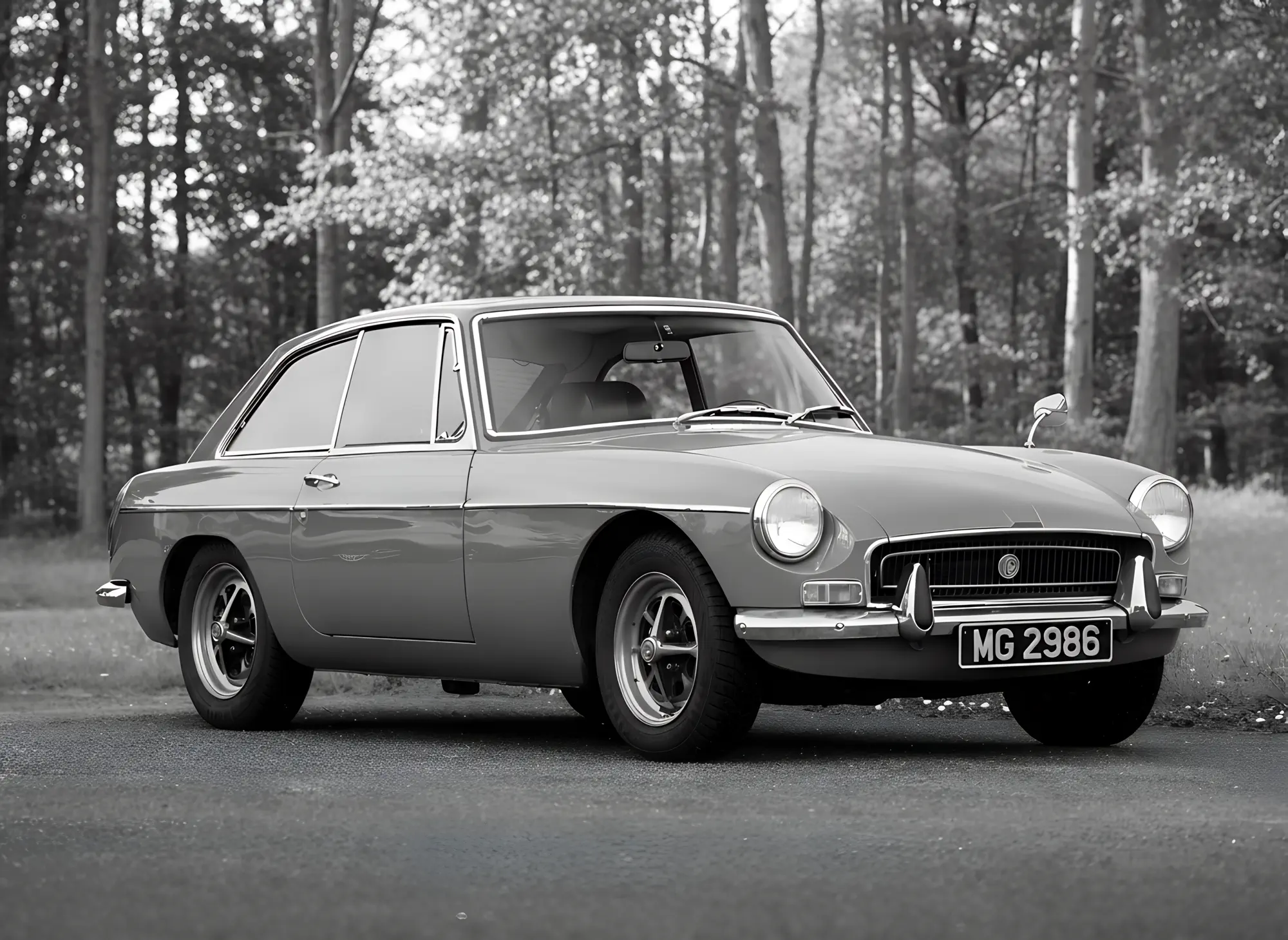MG: The People's Sports Car

Every country with a car industry has a brand that claims to be for "the people." Germany has Volkswagen. France has Citroën. Britain, however, is a bit more complicated. But if you were to ask which company truly brought the thrill of wind-in-the-hair, bugs-in-the-teeth motoring to the ordinary person, the answer is MG. For most of its life, MG focused on fun. The company took the humble, sensible mechanicals of a Morris saloon, threw away the boring body, and created a string of cheap, cheerful, and utterly charming sports cars that were adored by everyone from American GIs to British schoolteachers.
From Oxford Garage to Racing Legend
The story begins in the 1920s at Morris Garages in Oxford, a dealership for the cars of William Morris. The garage's manager was Cecil Kimber, an engineer with a flair for style and an understanding that there was a market for people who wanted more than their Morris saloon could offer. He realised that the standard Morris cars were suited for ferrying the vicar to church rather than the vicar's son to mischief. So he started taking the basic chassis and engines and fitting them with sleek, lightweight bodies that looked like they meant business. He slapped an octagonal badge on the front, and MG was born. The first MGs offered bespoke style and sporting performance for the price of a well-appointed family car, which was either clever marketing or daylight robbery, depending on whether you were buying or building them.
Midgets, Magnettes, and Pre-War Glory
Throughout the 1930s, MG carved out a position no other manufacturer quite managed to occupy: they made sports cars that clerks and junior managers could actually afford. The MG M-Type Midget, a tiny, boat-tailed two-seater based on the Morris Minor, was the key. For the first time, a normal person could buy a car, drive it to a racetrack, compete in a race, and then, assuming it hadn't broken, drive it home again. This was revolutionary in a country where proper sports cars were the preserve of gentlemen with independent means and Italian machinery in their garages.
The company produced a string of T-Types which established the template: long bonnet, short stubby tail, cutaway doors, and a folding windscreen that kept precisely nothing out. They also built the Magnettes, sporting saloons for the family man who wanted to pretend he was still young. By the end of the 1930s, MG had established itself as Britain's most attainable sports car maker. You could find faster cars, and you could certainly find more expensive ones, yet MG was the marque that ordinary enthusiasts could dream of owning without requiring a trust fund or a particularly understanding bank manager.
The Car That Charmed America
After the Second World War, something unexpected happened. American servicemen who had been stationed in Britain fell in love with the little MGs and started importing them back to the States in huge numbers. The MG TC, a slightly updated version of the pre-war car, became a sensation in post-war America. It was tiny, unreliable, and completely unsuited to American roads, but they could not get enough of them. Here was a car that leaked in the rain, had heating that was more theoretical than actual, and required constant fettling, yet American buyers lined up to own one. The TC almost single-handedly kick-started the American love affair with the European sports car, which says everything about the power of driving enjoyment over practical considerations.
This success was followed by the 1955 MGA, which looked nothing like the upright, old-fashioned T-Types. It was sleek and aerodynamic, shaped by wind tunnels rather than nostalgia. The American market, which by now was buying more MGs than Britain, loved it. Over 100,000 were sold, most of them crossing the Atlantic.
The MGB: A Global Phenomenon
The MGB, launched in 1962, became the car that defined affordable sports motoring for a generation. It was a handsome, honest sports car that did everything well enough. It was tough, easy to fix with basic tools, and delivered exactly what it promised: open-air motoring without the need for a second mortgage. It came as a roadster for the purists and as a coupe, the MGB GT, for those who preferred to arrive dry. For the next 18 years, it was the default answer to "I want a sports car but I'm not made of money." The company sold over half a million of them, making it the best-selling sports car in the world, a title it holds to this day.
Alongside the B, the company also produced the tiny MG Midget, sharing its platform with the Austin-Healey Sprite. Together, the MGB and Midget dominated the affordable sports car market throughout the 1960s and 70s. The MG factory in Abingdon became a spiritual home for enthusiasts, a place where proper, honest, fun cars were built by people who actually understood what made them special.
The British Leyland Darkness
And then it all went wrong. MG, as part of the giant BMC conglomerate, was swallowed up by the chaotic, soul-destroying black hole that was British Leyland in the 1970s. The brand was starved of investment and left to wither. The MGB, which had been a thoroughly modern car in 1962, was positively Edwardian by the late 1970s. Worse, American safety regulations forced the fitting of enormous black plastic bumpers that made it look like it had been reversed into a wheelie bin. The handling was ruined by raised ride height, the chrome was replaced with plastic, and what had been a pretty car became an embarrassment.
In 1980, the new management at British Leyland, in an act of breathtaking corporate vandalism, decided to close the historic Abingdon factory. The MGB was killed off, and for the first time in fifty years, MG was not building sports cars. The nation's favourite sports car company had been murdered by a committee that saw nothing but numbers.
A Sad Echo and a Final Flicker
For the next decade, the famous octagonal badge was humiliatingly slapped onto warmed-over Austin family cars. The MG Metro and Maestro were hot hatches with sporty pretensions and all the charm of a claims adjuster. It was a pathetic end for a name that had once meant something.
There was one final, genuine flicker of the old magic. In 1995, under Rover Group ownership, MG was properly reborn with the MGF. This was a modern, mid-engined roadster that felt like a sports car rather than a marketing exercise. It sold well, critics loved it, and for a brief moment, it looked like MG might have a future. It evolved into the MG TF, but the parent company, MG Rover, was already circling the drain. In 2005, it finally collapsed into bankruptcy.
The Chinese Rebirth
And that should have been the end. Yet the MG name, like a stubborn old roadster that refuses to die quietly, found a new home in China. SAIC Motor, a state-owned giant, bought the remains and decided that the world still needed MGs. What we have now are tidy, practical family cars: competent, efficient, and about as romantic as a wifi router. They sell well, they do not leak, and they start every morning, which is an achievement of sorts.
To some, that reliability is heresy. The old MGs were never perfect, but their imperfections made them human. They were cars you fixed, swore at, and loved despite yourself. The modern MG feels like an accountant's interpretation of fun: polite, punctual, and slightly bewildered by enthusiasm.
Still, there is something oddly British about it all. A once-proud national treasure now mass-produced by a foreign power, yet still sold under the pretence of heritage. It follows the same sentimental logic that keeps people drinking warm beer and buying Mini Coopers built in Austria. MG may no longer build the kind of cars that made it famous, but the badge endures because Britain cannot quite bring itself to let go of the idea that driving should be joyous, even if the joy now comes from nostalgia rather than petrol fumes.

